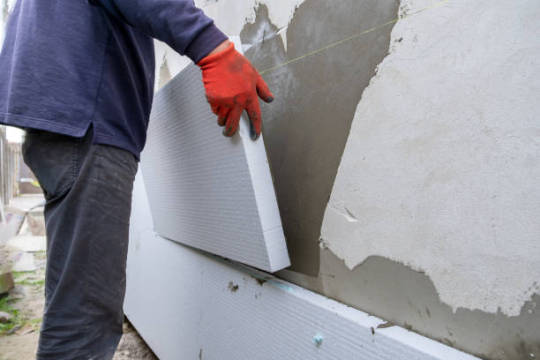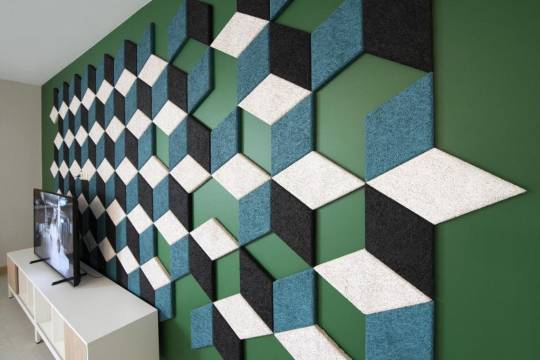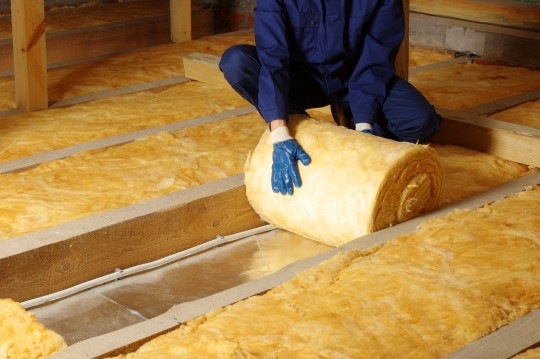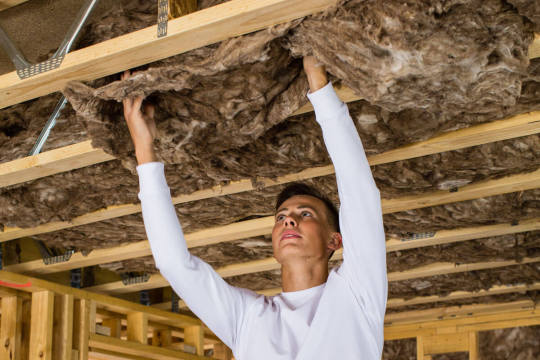Focused on what protects, insulates, and strengthens the spaces we live in. Uncover durable solutions and cutting-edge materials that do more than just fill walls.
Don't wanna be here? Send us removal request.
Text

Expanded Polystyrene Panel: The Lightest Way to Build Big
Want strong walls without the extra load? EPS panels are changing the way modern structures rise—fast, efficient, and built to last. Curious? Step in.
0 notes
Text
Walls That Work Harder: The Quiet Power of Acoustic Panels in Everyday Life
We live in a world that’s getting louder by the day—traffic, constant phone notifications, street noise, TVs, and even neighbors arguing through paper-thin walls. And while most people have gotten used to the noise, others are beginning to ask: why live with it at all? That’s where Acoustic panels quietly step in—literally. Whether at home, in schools, offices, or cafes, these silent heroes are making a big impact on how we hear and feel in the spaces we spend the most time.

What’s All the Noise About?
Noise doesn’t just annoy us—it drains us. It steals focus, interrupts sleep, heightens stress, and makes even the coziest spaces feel chaotic. Yet, so many of us accept background noise like it’s part of life. The truth is, it doesn’t have to be.
Imagine walking into your favorite café and instead of a headache-inducing echo chamber, you’re greeted by soft conversations, gentle music, and peace. That’s the magic of walls that do more—walls that are actually designed to absorb, soften, and manage sound.
Where Acoustic Comfort Matters Most
Some spaces absolutely depend on calm soundscapes. Think of hospitals, schools, libraries, or therapy rooms. But even in homes, sound control is no longer a luxury—it’s becoming a need. With more people working remotely, living in apartments, or simply craving quiet, managing sound has gone from optional to essential.
Here’s where acoustic panels shine. Installed on walls or ceilings, they quietly go to work absorbing the clatter, cutting out echoes, and softening hard noises. No fancy gadgets. No noise-cancelling machines. Just smart, silent surfaces doing what walls were never designed to do.
Not Just for Studios Anymore
For years, people assumed acoustic panels were only meant for music studios or concert halls. But that's changing—fast.
Today’s acoustic panels are stylish, customizable, and designed to blend into modern interiors without looking like giant foam blocks. They're used in open-plan offices to improve focus and reduce distraction. They're installed in restaurants to create a more relaxed dining experience. They’re even showing up in living rooms and bedrooms to support better sleep and a more peaceful environment.

You Don’t Know How Loud It Was—Until It’s Gone
What surprises most people is how different a space feels once acoustic panels are in place. It's not just quieter—it's calmer. You start noticing your own thoughts more. Conversations become clearer. You feel less tense, less drained. It's like your brain no longer has to fight the room to stay focused.
And while the effect is quiet, the result is loud and clear: better quality of life.
Real Stories, Real Change
A mother of two recently shared how adding panels to her kids’ shared study room changed everything. “They weren’t getting distracted anymore,” she said. “Even their teachers noticed a difference in homework focus.”
In another case, a couple who had constant noise from a neighboring unit said they finally “felt at home” once they installed wall panels in their bedroom. It wasn’t just about silence—it was about reclaiming their space.
These aren't rare stories. They're becoming more and more common as people realize sound affects more than just their ears—it impacts their mood, health, and comfort.
Also Read: Why Your Insulation Isn't Working—and What to Use Instead
Why This Matters Now More Than Ever
We’re spending more time indoors than ever before. Whether it's working from home, relaxing after a long day, or spending time with loved ones, the quality of the space we live in has never mattered more. While most of us think about how a room looks, it’s time we start thinking about how it sounds.
Acoustic panels are not about decorating—they’re about transforming your space into one that supports focus, calm, and connection. They let your walls do more than just stand—they let them support your everyday peace.
And it’s not just interior designers or architects paying attention. Organizations like the National Institute for Occupational Safety and Health (NIOSH) have long emphasized the importance of noise control in both public and private spaces, pointing out how chronic noise exposure can affect mental and physical health. So yes, soundproofing isn’t just a fancy trend—it’s a step toward healthier living.
0 notes
Text

Why Ceramic Fiber Wool Feels Like a Smart Choice
When heat hits hard, ceramic fiber wool stands strong. High performance, super light, and ready to protect—this is insulation that works as hard as you do.
0 notes
Text
Why Your Insulation Isn't Working—and What to Use Instead
You spent good money insulating your home or workspace. Maybe you even did it yourself, patching up walls and ceilings in hopes of keeping things warm in winter and cool in summer. But somehow, the results feel… off. You’re still reaching for extra blankets, turning up the heat, or sweating through hot afternoons. What went wrong?
It might not be your fault at all. Insulation can fail for many reasons—old materials, poor installation, or just choosing the wrong type for your space. And while everyone talks about the big stuff like walls and roofs, smart choices from mass loaded vinyl suppliers are often overlooked—yet they’re crucial when it comes to sealing the deal on comfort and soundproofing
Let’s dive into why your insulation might be underperforming and what modern solutions can finally give you the comfort and energy savings you’ve been promised.

You’re Using Outdated Materials
A lot of buildings still rely on materials that haven’t aged well. Older fiberglass batts, for instance, can sag, collect moisture, or lose their shape over time. When that happens, air slips through cracks, and your home becomes a sieve for heat or cool air.
Newer materials are not only more efficient but also better suited to modern construction methods. Think of today’s insulation like upgrading from dial-up to fiber internet—same idea, drastically better performance.
Gaps, Cracks, and Poor Sealing
Even the best insulation in the world won’t work if it’s not sealed properly. Gaps around windows, outlets, ductwork, or joints can let air sneak in and out, making your heating and cooling systems work overtime.
This is where installation matters just as much as the material. If your insulation is loose, cut too short, or not pressed into every corner, you’re basically giving outside air a VIP pass into your home.

It Was Never the Right Fit
Insulation isn’t one-size-fits-all. The same material that works beautifully in a dry attic may be a disaster in a moist basement. You need to match the insulation type to the space and climate.
Some materials are better for soundproofing. Others handle moisture like a pro. Some shine in tight crawl spaces, while others need open walls to perform their best. Using the wrong type can mean you're spending money on something that was never built to fix your particular problem.
So, What Should You Use Instead?
Let’s talk about smart upgrades that make a real difference—without needing to tear your home apart.
1. Resin Bonded Glass Wool
This material is lightweight, flexible, and easy to install. It’s great for controlling heat and sound, making it ideal for both homes and offices.

2. Ceramic Fiber Wool
Need serious heat resistance? Ceramic fiber wool is used in industrial applications for a reason. It stands up to extremely high temperatures, which makes it perfect for furnaces, kilns, or anywhere heat is intense.
3. Expanded Polystyrene Panels
If you want rigid, strong insulation that also resists moisture, expanded polystyrene (EPS) panels are a smart choice. They work well in walls, floors, and roofs, especially in areas prone to dampness.
4. Mass Loaded Vinyl (MLV)
Trying to make a space quieter? MLV is a go-to material for soundproofing. It’s dense, flexible, and adds mass to walls or ceilings without taking up too much space.
These materials aren’t just trendy—they’re proven. And when paired with good installation practices (like sealing joints with proper tapes and making sure nothing’s left exposed), they can completely change the way your space feels.
Also Read: 5 Game-Changing Materials Making Buildings Quieter and Cozier
Don’t Just Insulate—Upgrade Smartly
Insulation isn’t just about keeping warm or cool. It’s about feeling comfortable in your own space, saving money on your energy bill, and protecting your home long-term.
Before you give up and assume your home is just “always like this,” take a closer look at what you’re using. The right materials—and the right strategy—can make your home quieter, warmer, cooler, and cozier. It doesn’t have to be expensive. It just has to be done right.
And remember, when making insulation changes, it's smart to check in with reliable resources. The U.S. Department of Energy (DOE) offers excellent guidelines on choosing and installing the best insulation for your needs. They even have recommendations based on where you live, which can save you from making costly mistakes.
Better insulation isn’t just possible—it’s a game-changer. And you deserve to feel the difference.
#insulation tapes#Mass Loaded Vinyl (MLV)#Expanded Polystyrene Panels#Ceramic Fiber Wool#Resin Bonded Glass Wool
0 notes